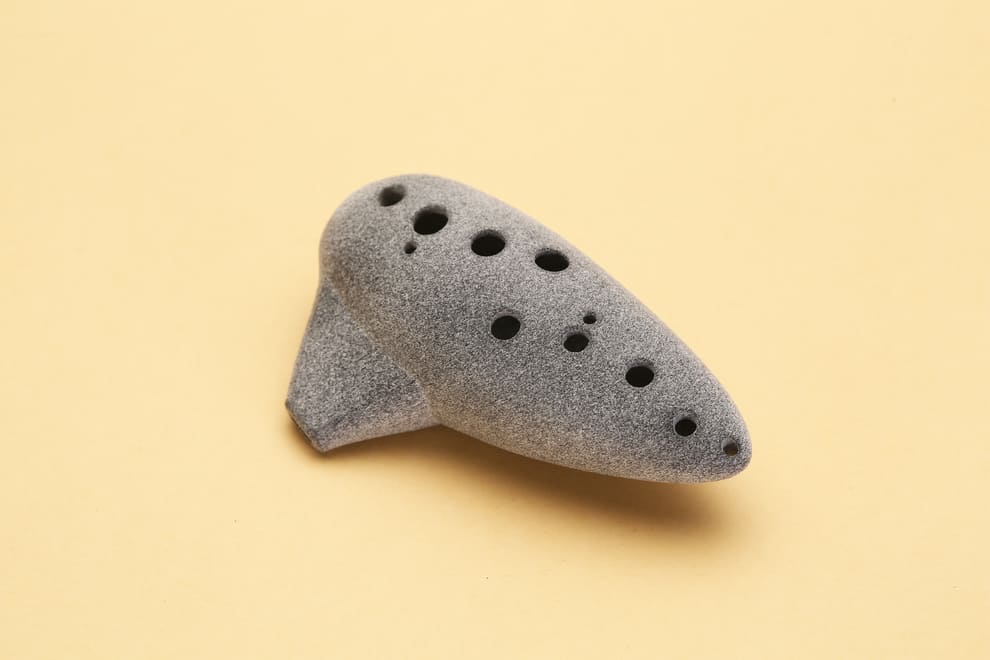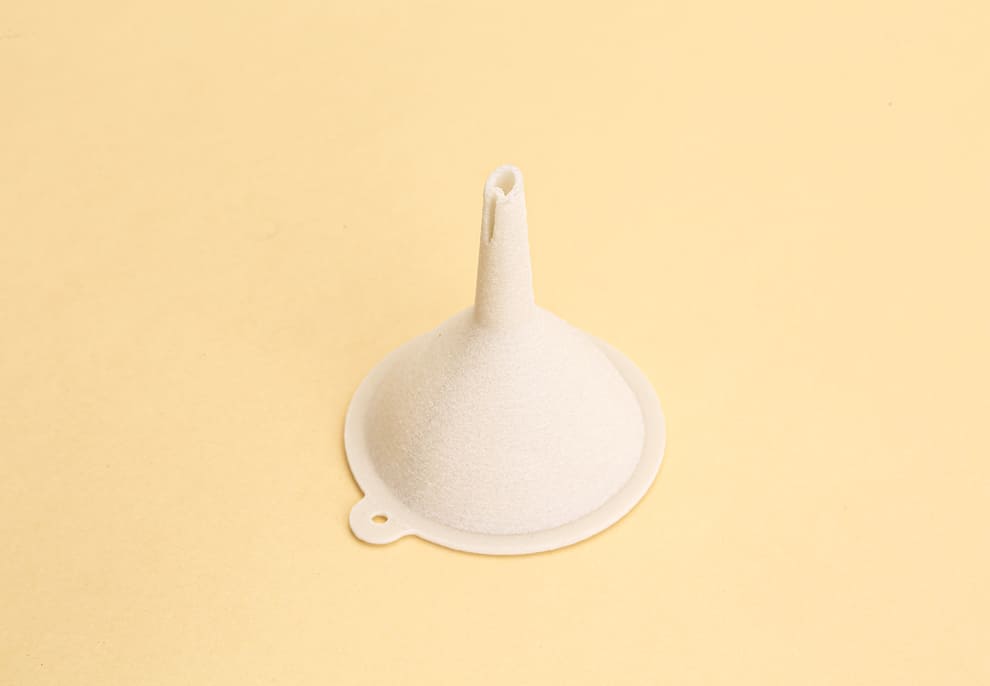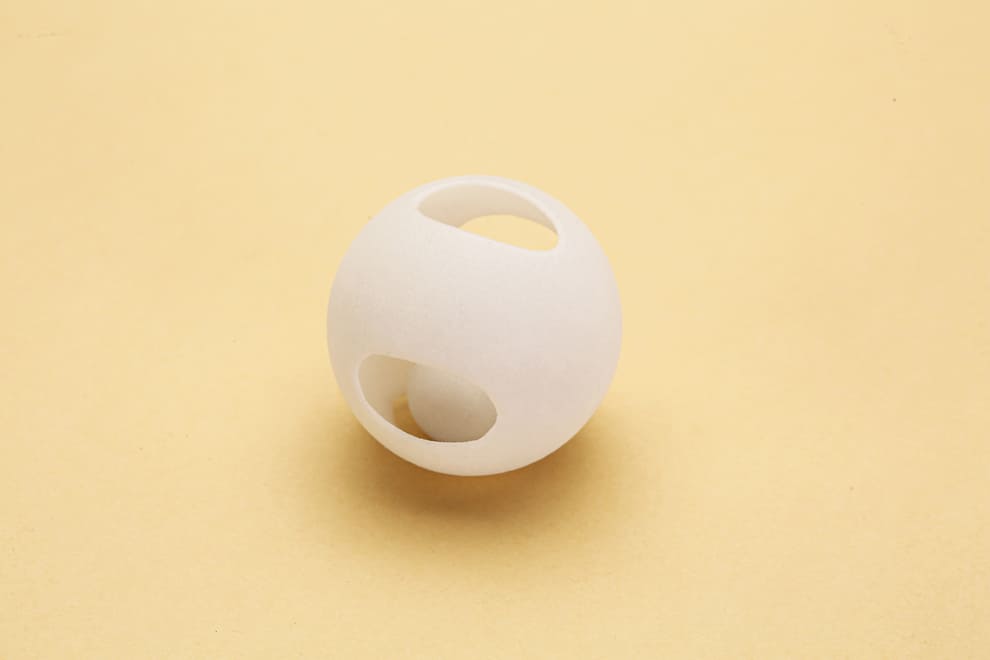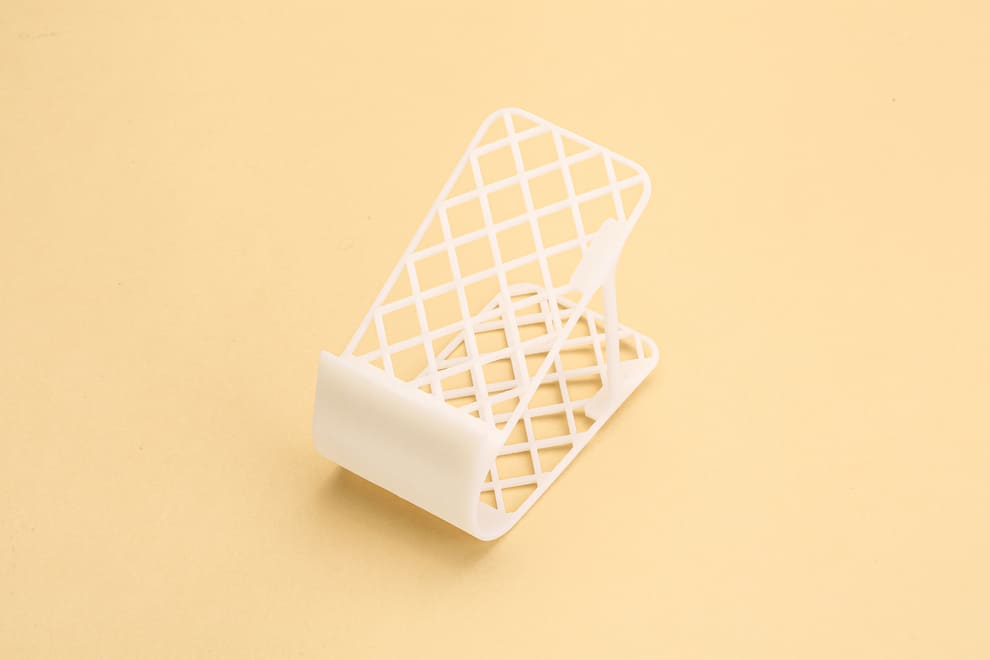Selective Laser Sintering (SLS) and Multi Jet Fusion (MJF) are two popular powder-bed fusion 3D printing methods that commonly use nylon (usually PA12) as their material. In SLS, a high-power CO₂ laser selectively sinters layers of nylon powder to form a solid part, while in MJF, an inkjet array deposits a fusing agent (and detailing agent) onto preheated powder and then passes an infrared heater over each layer to fuse it. Both techniques build parts layer-by-layer from nylon powder, but the heat source and process differ: SLS uses a moving laser to melt powder particles, whereas MJF uses printed agents to absorb IR energy and fuse the powder, which leads to distinct outcomes in surface finish, mechanical properties, and production efficiency.
How SLS and MJF Printing Work
SLS (Selective Laser Sintering)
The printer spreads a thin layer of nylon powder, then a laser scans and sinters (heats until particles fuse) the desired cross-section of the part. The process is repeated layer by layer. SLS is a mature technology (invented in the 1980s) that can use a broad range of nylon and composite powders. Because the entire powder bed is kept hot between layers, unsintered powder supports overhangs (no support structures are needed), and excess powder can be reused (though only ~30–50% typically).

Image Courtesy of Hi3DP
MJF (Multi Jet Fusion)
Developed by HP, MJF also uses nylon powder (often PA12), but a printhead “jets” a fusing agent onto the areas to be solid, and a detailing agent around edges for precision. An IR heating lamp then fuses the treated powder. This process repeats for each layer. MJF parts are built in a heated chamber (kept just below melting), and because the printhead deposits agents rather than scanning with a laser, the thermal profile is broader and more uniform. MJF printers often have removable build cartridges, allowing a new print to begin without waiting for parts to cool.

Image Courtesy of Hi3DP
Surface Finish and Appearance
SLS and MJF parts both come off the printer with a rough, matte surface. SLS prints have a grainy texture, whereas MJF parts come out gray or black (because HP’s fusing agent is black). In either case, the surface feels somewhat sandy or pebbled. Secondary processes are often used to smooth and seal the surface: common methods include media tumbling or chemical vapor smoothing, which can produce a sealed, semi-gloss finish on both SLS and MJF parts.
Color: SLS nylon parts start white/gray/black and can be dyed or painted in many colors. MJF parts are printed gray/black and are usually dyed or painted black; they have far fewer color options (and can only take black dye by default).
Roughness: Both processes yield a “grainy” texture by default. If a smoother finish is required (for example, polished prototypes), MJF generally yields slightly better as-printed smoothness than SLS, but both usually need post-processing for a true smooth surface.

Image Courtesy of Hi3DP
Mechanical Properties
|
Property |
SLS Nylon |
MJF Nylon |
|
Tensile Strength |
~44–50 MPa |
~48–50 MPa |
|
Flexural Modulus |
~1600–1800 MPa |
~1800–2000 MPa |
|
Elongation at Break |
~20–35% (more ductile, varies by material blend) |
~15–20% (stiffer, less flexible) |
|
Isotropy |
Moderate anisotropy (weaker along Z-axis) |
Near isotropic (uniform strength in all directions) |
|
Heat Deflection Temp. |
~140–150 °C |
~170–175 °C |
|
Impact Resistance |
Good, especially with PA11 or filled blends |
Very good, consistent across directions |
|
Design Consideration |
Better for flexible parts, snap-fits, and ductile applications |
Better for strong, precise, load-bearing components |
Accuracy and Detail Resolution
Layer Thickness
MJF machines are typically built with thinner layers (~80 μm) than many SLS machines (~100–120 μm). This finer layer height gives MJF parts a smoother profile on angled surfaces.
Feature Size
MJF can capture finer details: Protolabs notes a minimum feature size of ~0.020 in (0.51 mm) for MJF versus ~0.030 in (0.76 mm) for SLS. In other words, very small holes or thin fins can be made slightly thinner with MJF.
Dimensional Tolerance
SLS is often very accurate in XY (laser-steered) and can hold tight tolerances (~±0.25 mm for the first inch of part length). MJF can achieve about ±0.30 mm tolerance for the first inch (plus ~0.1% per additional inch). In practical terms, SLS may have a slight edge in pure dimensional accuracy, while MJF trades a bit of tolerance for finer surface detail.
Consistency
Since MJF uses a printhead and lamp, its heating is very uniform across the layer, which tends to produce parts with very consistent dimensions and less warpage over multiple builds. SLS systems, with their laser scanning patterns, may have slightly more variation across the build area.

Image Courtesy of Hi3DP
Post-Processing and Finishing
Support Rtructures
Neither SLS nor MJF parts require support structures during printing. The unsintered powder itself supports overhangs, which means design freedom – designers can create internal channels, complex lattices, and movable assemblies without worrying about support removal.
Powder Removal
After printing, both SLS and MJF parts must be dug out of the powder bed and brushed or blown clean of loose powder. This step is the same for both processes.
Surface Finishing
As noted above, the raw texture is matte-grainy. To improve appearance or tight fits, common post-processes include: shot-blasting/air-blasting, bead or sand tumbling, hand sanding, or chemical smoothing (vapor polishing). These can be applied to parts from either process. (For example, solvent vapor can smooth PA surfaces to a semi-gloss state with minimal dimensional change.)
Coloring
SLS parts (white/gray) can be dyed or painted in a wide range of colors. MJF parts (gray) are typically only dyed or painted black. Both can be painted, but note MJF’s dark base means it’s hard to get light/brighter colors. In practice, if color aesthetics matter, SLS has more options.
Other Treatments
Techniques like chemical smoothing, sealing, or applying surface coatings work similarly on both. Design features (like snap fits or threads) may require minimal cleanup on either material, but no unique treatments are needed exclusively for one or the other.

Image Courtesy of Hi3DP
Production Speed and Cost
Build Speed
MJF generally prints faster than SLS. Because the fusing and detailing agents and IR lamp can fuse an entire layer in one sweep (without scanning a laser), print times are often shorter on MJF machines. HP also designed MJF machines for high throughput (removable build trays mean one tray can cool outside while the next runs). In contrast, SLS machines may take longer per layer (laser scanning takes time) and usually require cooling in place. In practice, MJF can reduce lead times for many-part runs.
Build Volume
Most industrial SLS machines have larger build envelopes than MJF machines. For example, some SLS build volumes are ~660×380×580 mm, whereas HP’s standard MJF volume is ~380×280×380 mm. This means SLS can pack larger or more parts per run (useful for large items or bulky batches). However, for many small parts, both can nest hundreds of items easily.
Material Usage
MJF has better powder efficiency. It can reuse up to ~80% of unused powder, whereas SLS typically reuses only ~30–50%, which reduces waste and material cost for MJF, especially on large runs. Conversely, SLS will often regenerate or discard more powder between builds.
Cost per Part
At low volumes or for prototypes, costs are comparable for SLS and MJF. However, as volume increases, MJF’s faster speed and powder reuse usually make it more cost-effective.
Equipment and Run Costs
MJF printers (especially industrial HP models) have high capital costs and service needs. SLS machines also cost >$200k, but smaller benchtop SLS systems exist. Material price per kg is similar (on the order of ~$30–100/kg, with bulk discounts) for PA12 in both processes. HP emphasizes the reusability of its MJF nylon, which can significantly lower ongoing material costs.
Design Freedom and Material Options
Both SLS and MJF excel at geometry freedom because no supports are needed. You can print:
• Complex internal channels, lattices, and cavities without worrying about trapped supports (unsintered powder simply fills voids).
• Fine features and moving parts in place, as long as tolerances account for powder clearance.
• Large assemblies can be 3D printed as separate pieces and snapped together, or even multiple parts in one build tightly nested for efficiency.
Where they differ in materials and design considerations:
Nylon grades: SLS machines often support more material varieties. Common SLS polyamides include PA12 (unfilled or filled), PA11, PA6 blends, and reinforced nylons (glass-, carbon-, aluminum-filled). MJF originally offered mainly PA12 (and a 40% glass-filled version), but HP has expanded to PA11, polypropylene (PP), and TPU options. In general, SLS typically has a wider range of nylons and composites, whereas MJF focuses on the fastest-growing materials (PA12, PP, TPU).
Support-less print: As noted, neither requires supports. Both allow near 100% design freedom in terms of overhangs and undercuts, which is a major advantage of powder-bed fusion over, say, FDM or SLA.

Image Courtesy of Hi3DP
SLS vs MJF Nylon: Which to Choose?
|
Attribute |
SLS Nylon |
MJF Nylon |
|
Process |
Laser sintering (CO₂ laser melts nylon powder per layer). Uses preheated powder bed; larger build areas. |
Multi-agent fusion: inkjet-deposited fusing/detail agents + IR lamp. Narrower build; removable build chambers. |
|
Surface & Color |
Finish: Matte, slightly grainy. Often off-white/gray as printed. Color: Can be dyed/painted many colors. |
Finish: Matte, grainy. Printed gray/black (black fusing agent). Color: Limited to gray/black base; usually dyed or painted black. |
|
Materials |
Broad materials (nylon 11, 12 in various grades; glass- or carbon-filled PA; PP, TPU, etc.). |
Primarily PA12 (standard and 40% glass-filled); growing PA11, PP, TPU offerings. Fewer specialty nylons available. |
|
Strength & Isotropy |
Strong (tensile ~44–50 MPa) but moderately anisotropic. Good elongation (~20–30%). |
Very strong (tensile ~48–50 MPa) and nearly isotropic. Slightly less elongation (~15–20%), higher stiffness. |
|
Accuracy/Detail |
Tighter accuracy (±0.25 mm typical). Larger layer thickness (~100–120 µm). Small feature size ~0.76 mm. |
Good accuracy (±0.3 mm typical). Finer layers (~80 µm) and detail down to ~0.51 mm. Typically finer visible detail. |
|
Post-Processing |
Requires powder removal and cleaning. Can be sanded or smoothed; supports complex finishing. Parts easily dyed/painted any color. |
Requires powder removal; can be polished or vapor-smoothed. Parts are gray/black, typically painted black if color needed. |
|
Speed & Volume |
Moderate build times; larger max part size (e.g. up to ~660×380×580 mm). Less powder reuse (~30–50%). |
Faster per-layer fusion and no need to cool in-place. Smaller build volume (e.g. ~380×280×380 mm). High powder reuse (~80%). |
|
Cost |
Similar prototype cost. More machine variety (including lower-cost systems). Powder waste can raise material cost. |
Similar for prototyping; more cost-efficient at scale. HP MJF machines are high-end (higher capital cost). Better material utilization reduces cost per part. |
|
Best for |
Complex, large parts or volumes; parts requiring high ductility or color customization. |
Fine-detail or small-medium functional parts with uniform strength; rapid prototyping and small production runs. |
FAQs
Q: Which process yields stronger nylon parts, SLS or MJF?
A: MJF parts typically exhibit slightly higher tensile strength (≈48–50 MPa) and more uniform (isotropic) properties versus SLS’s ≈44–50 MPa with some build‑direction anisotropy.
Q: How do surface finishes compare between SLS and MJF?
A: Both produce a matte, grainy texture—but MJF’s as‑printed surface is generally smoother (fewer pits) than standard SLS.
Q: Can you dye or color parts made with SLS and MJF Nylon?
A: SLS parts (printed white/gray) can be dyed in many colors, while MJF parts (printed gray/black) are typically only dyed or painted black.
Q: Which is faster: SLS or MJF Nylon printing?
A: MJF usually prints layers in a single lamp pass (no laser scan), making it faster per layer and allowing higher throughput.
Q: Do SLS and MJF require support structures?
A: Neither requires supports—unsintered powder supports overhangs and complex geometries in both processes.














